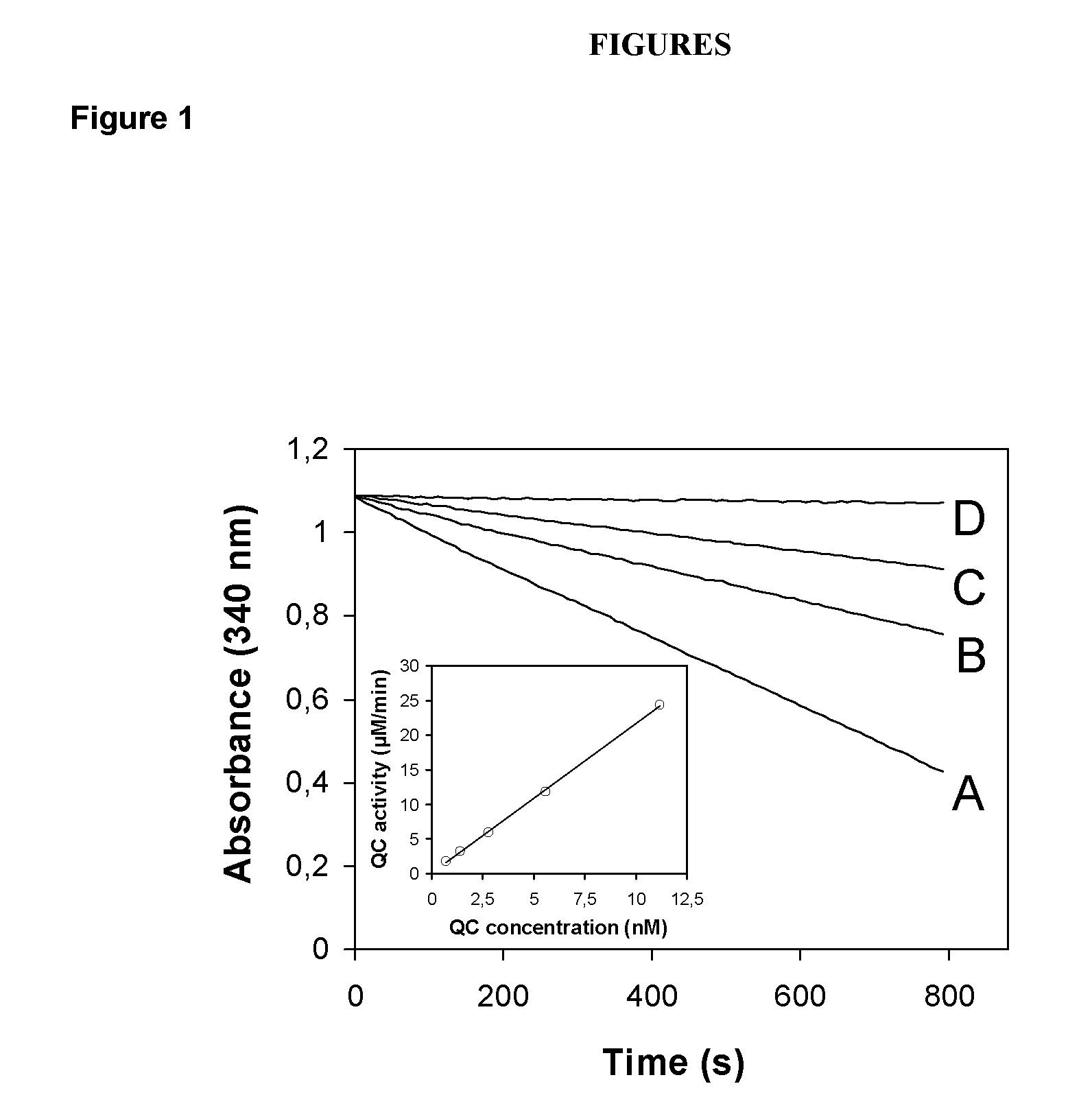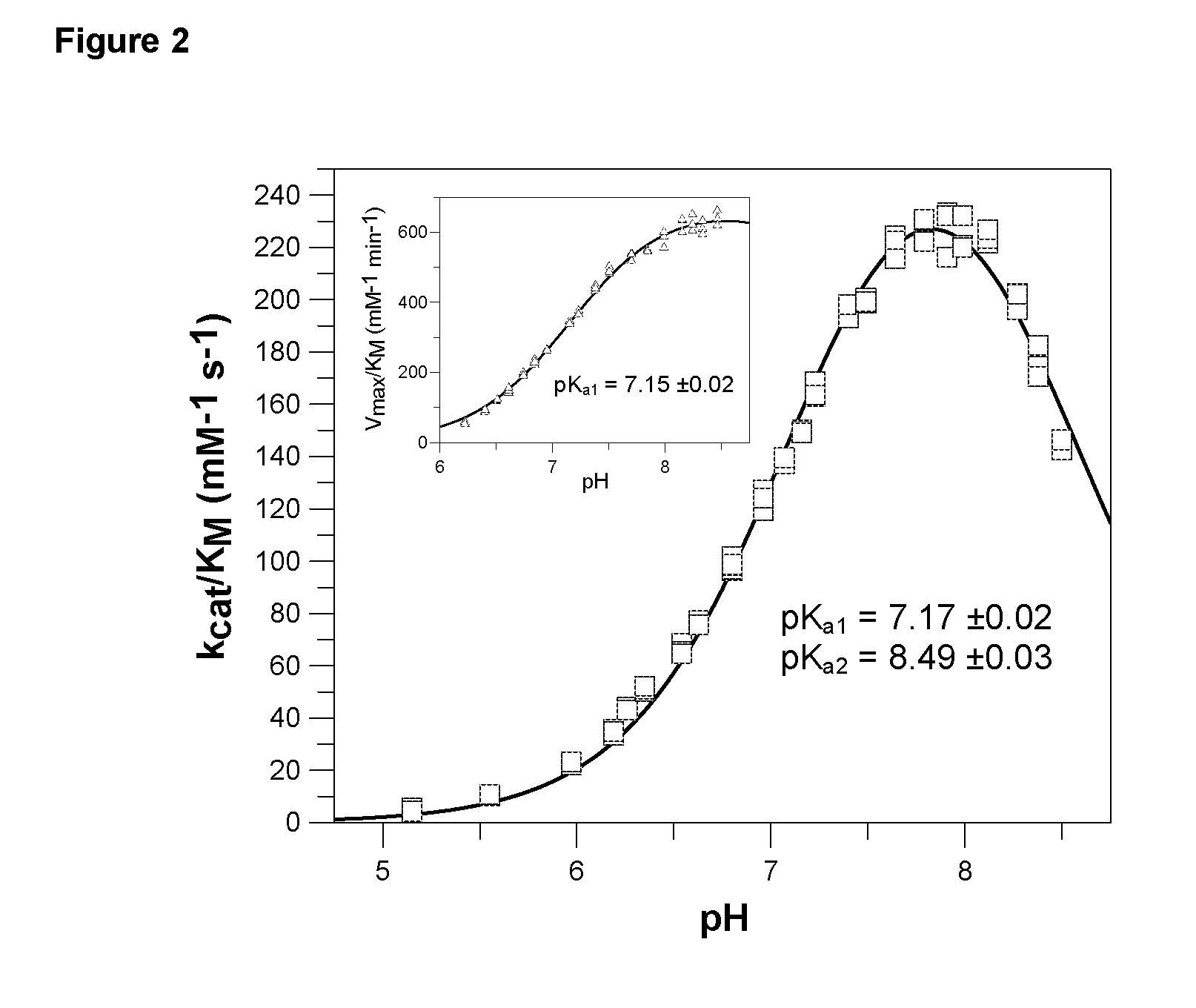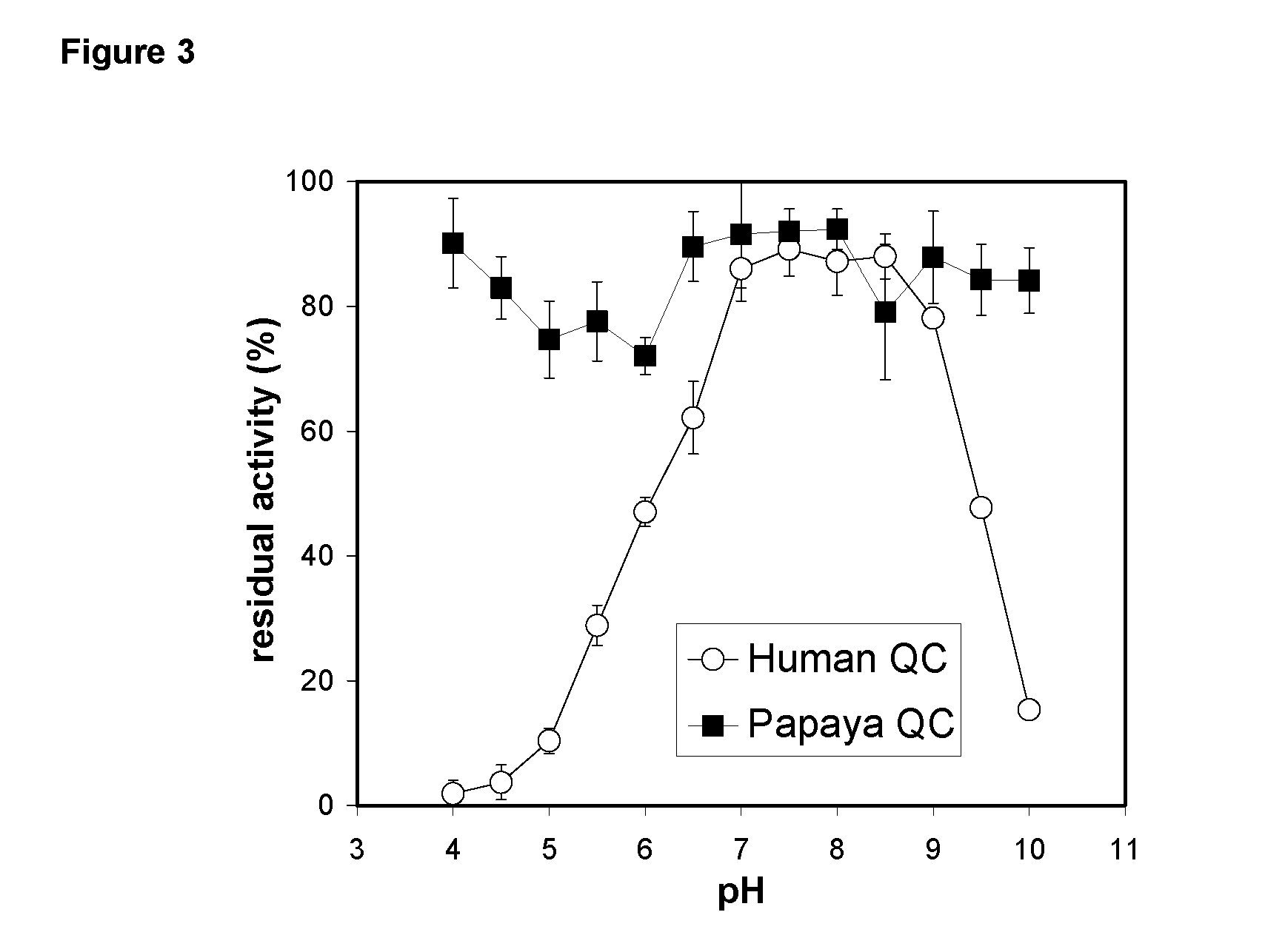Use of effectors of glutaminyl and glutamate cyclases
a technology of glutamate cyclase and effector, which is applied in the field of glutamate cyclase, can solve the problems of no treatment available, dramatic adverse effects, and dramatic increase in the number of patients worldwide, and achieve the effect of stimulating the gastrointestinal tract and suppressing the proliferation of myeloid progenitor cells
- Summary
- Abstract
- Description
- Claims
- Application Information
AI Technical Summary
Benefits of technology
Problems solved by technology
Method used
Image
Examples
example 4
[0531] The pH-dependence of catalysis of human and papaya QC was investigated under first-order rate conditions, thus reflecting the impact of the proton concentration on the specificity constant kcat / KM. For this purpose, the coupled enzymatic assay using pyroglutamyl aminopeptidase as auxiliary enzyme and Gln-βNA as substrate was used. Pyroglutamyl aminopeptidase was shown to be active and stable between pH 5.5-8.5 (Tsuru, D. et al. 1978 J Biochem (Tokyo) 84, 467-476). Hence, the assay enabled the study of QC catalysis in this pH-region. The rate profiles obtained were fit to classical bell shaped curves, as shown in FIG. 2. The human QC bears a very narrow pH-dependence with an optimum at about pH 7.8-8.0. The rate tended to decrease at more basic pH. This is in contrast to the rate profile observed with papaya QC, which showed no drop in activity up to pH 8.5 (FIG. 2, inset). However, both enzymes had their optimum of specificity at pH 8. Surprisingly, evaluation o...
example 9
Turnover of [Gln3]Aβ3-11a; 3-21a and 3-40 by Recombinant Human QC
[0569] All [Gln3]Aβ derived peptides tested, were efficiently converted by human QC into the corresponding pyroglutamyl forms (Table 8). Due to the poor solubility of [Gln3]Aβ3-21a and [Gln3]Aβ3-40 in aqueous solution, the determinations were carried out in presence of 1% DMSO. The higher solubility of [Gln3]Aβ3-11a, however, allowed the kinetic analysis of the QC-catalyzed turnover in presence and absence of DMSO (Table 8). Taken together, the investigation of the Aβ peptides as QC-substrates with chain-length of 8, 18 and 37 amino acids (see Table 8) confirmed the observation that human QC-activity increases with the length of its substrates. Accordingly, Gln1-gastrin, Gln1-neurotensin, Gln1-GnRH are among the best QC-substrates taking the specificity constants into account. Similarly, [Gln3]Aβ3-40 and glucagon, the largest QC-substrates investigated thus far, exhibited high second order rate constants (449 mM−1s−1 ...
example 12
Enzyme Inactivation / Reactivation Procedures
[0575] An aliquot of human QC (0.1-0.5 mg, 1 mg / ml) was inactivated overnight by dialysis against a 3000-fold excess of 5 mM 1,10-phenanthroline or 5 mM dipicolinic acid in 0.05 M Bis-Tris / HCl, pH 6.8. Subsequently, the inactivating agent was carefully removed by dialysis (3 cycles, 2000-fold excess) of the samples against 0.05 M Bis-Tris / HCl, pH 6.8, containing 1 mM EDTA. Reactivation experiments were performed at room temperature for 15 minutes using Zn++, Mn++, Ni++, Ca++, K+ and Co++ ions at concentrations of 1.0, 0.5, 0.25 mM in 0.025 M Bis-Tris, pH 6.8 containing 0.5 mM EDTA. QC activity assays were performed in 0.05 M Tris / HCl, pH 8.0, containing 2 mM EDTA, in order to avoid a rapid reactivation by traces of metal ions present in buffer solutions.
[0576] Human QC was almost completely inactivated after extensive dialysis against 5 mM 1,10-phenanthroline or 5 mM dipicolinic acid. After repeated dialysis overnight against chelator-fre...
PUM
| Property | Measurement | Unit |
|---|---|---|
| Time | aaaaa | aaaaa |
| Molar density | aaaaa | aaaaa |
| Molar density | aaaaa | aaaaa |
Abstract
Description
Claims
Application Information
 Login to View More
Login to View More - R&D
- Intellectual Property
- Life Sciences
- Materials
- Tech Scout
- Unparalleled Data Quality
- Higher Quality Content
- 60% Fewer Hallucinations
Browse by: Latest US Patents, China's latest patents, Technical Efficacy Thesaurus, Application Domain, Technology Topic, Popular Technical Reports.
© 2025 PatSnap. All rights reserved.Legal|Privacy policy|Modern Slavery Act Transparency Statement|Sitemap|About US| Contact US: help@patsnap.com



